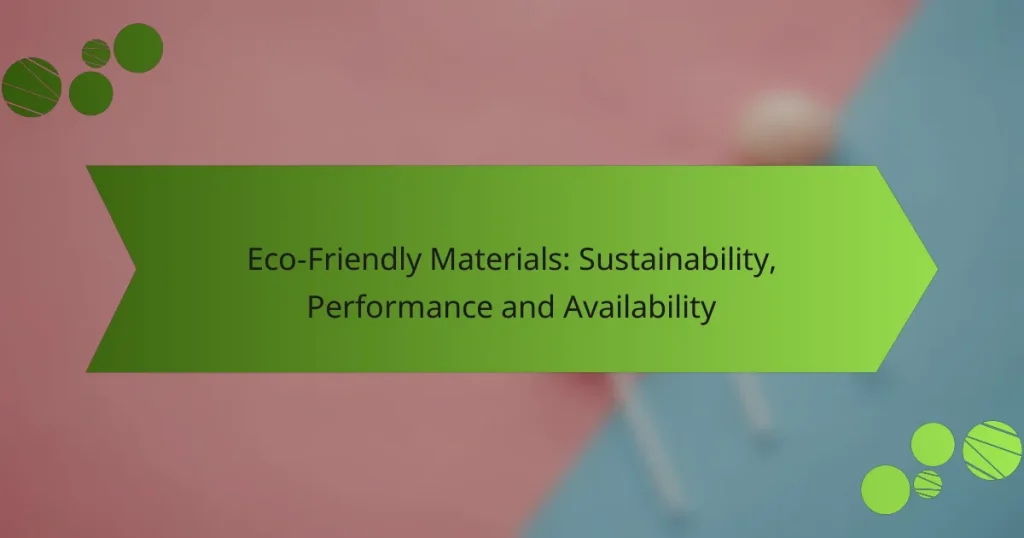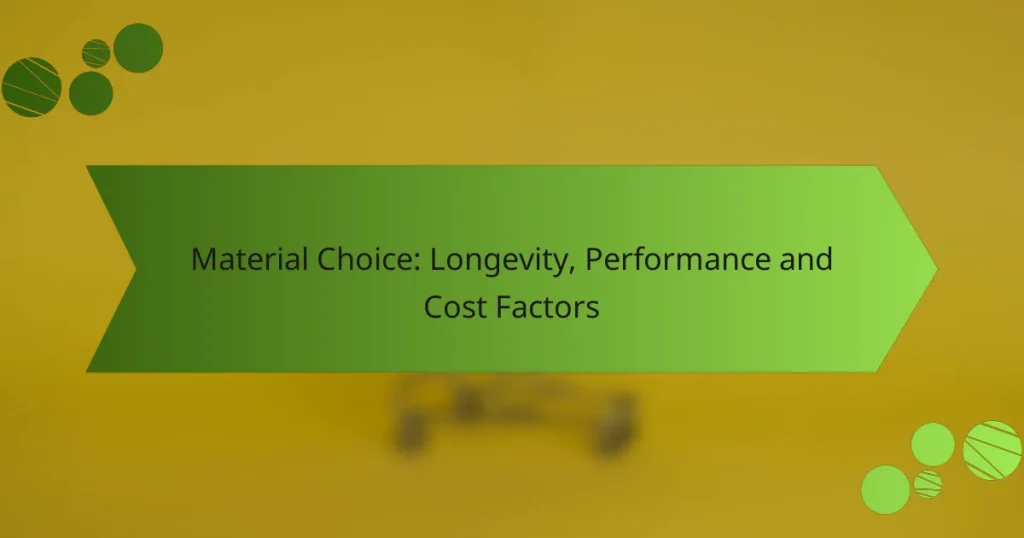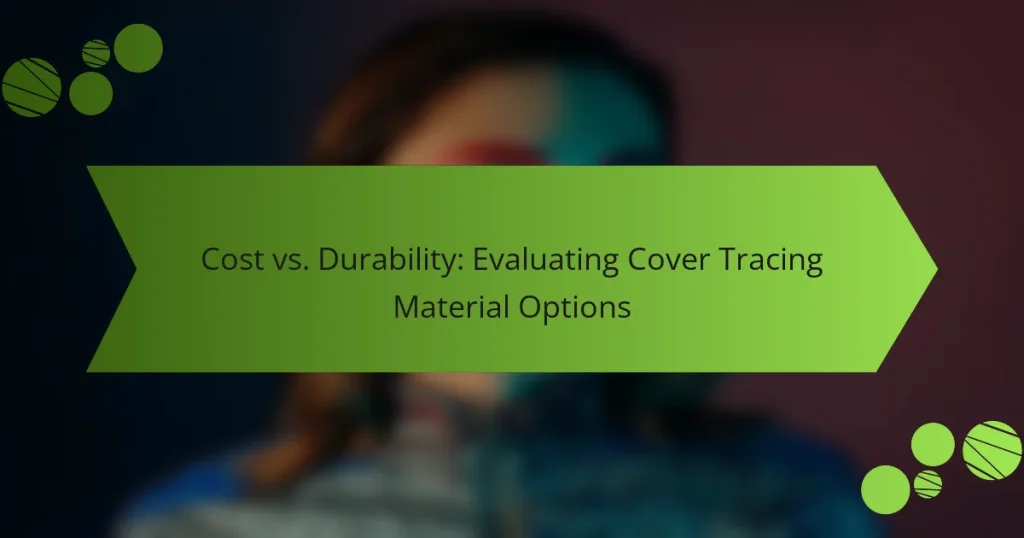Cover tracing materials are essential tools for artists and designers, offering various options like graphite paper, carbon transfer paper, and tracing vellum to meet diverse project needs. Selecting the right material involves understanding the specific requirements of your work, including thickness and medium compatibility. With numerous sources available across the USA, you can easily find the perfect tracing materials to enhance your creative projects.
Material Choice: Longevity, Performance and Cost Factors
Cover Tracing: Humidity-Resistant Materials, Durability and Performance
Cover Tracing: Material Selection Based on Project Size and Requirements
Material Quality: Impact on Effectiveness and Performance of Cover Tracing
Synthetic vs. Natural Materials: Which Is Better and When to Use
Cost vs. Durability: Evaluating Cover Tracing Material Options
What are the best cover tracing materials?
The best cover tracing materials include graphite paper, carbon transfer paper, tracing vellum, transparent film, and specialty tracing paper. Each material has unique properties that cater to different tracing needs and applications.
Graphite paper
Graphite paper is a thin sheet coated with a layer of graphite on one side, allowing for easy transfer of pencil drawings. To use it, place the graphite side down on your base material and trace over the top with a pencil or stylus.
This type of paper is ideal for artists and designers who need to create precise copies of sketches or designs. It is readily available in various sizes and can be used on different surfaces, such as paper, wood, or canvas.
Carbon transfer paper
Carbon transfer paper functions similarly to graphite paper but uses a carbon-based coating, which produces darker and more defined lines. It is often preferred for transferring ink or pen drawings.
When using carbon transfer paper, ensure the carbon side is facing down on the surface you want to trace. This material is particularly useful for creating detailed illustrations or patterns, especially on heavier paper types.
Tracing vellum
Tracing vellum is a semi-transparent paper that allows for clear visibility of underlying images while providing a smooth surface for drawing. It is commonly used in architectural and engineering drawings due to its durability and resistance to tearing.
This material can be used with various mediums, including pencil, ink, and markers. It is available in different weights, with heavier options providing more stability for intricate designs.
Transparent film
Transparent film is a plastic sheet that offers a clear surface for tracing and is often used in digital applications or overlays. It is compatible with markers, pens, and even some printers, making it versatile for various projects.
When working with transparent film, consider the thickness, as thicker films provide more durability but may be less flexible. This material is excellent for layering designs or creating overlays in presentations.
Specialty tracing paper
Specialty tracing paper encompasses a range of unique papers designed for specific purposes, such as lightbox tracing or watercolor applications. These papers vary in texture, opacity, and weight, catering to different artistic needs.
When selecting specialty tracing paper, consider the intended use and the medium you will be working with. Some papers are designed to withstand moisture, while others may be better suited for dry mediums like pencil or charcoal.
How to choose cover tracing materials?
Choosing cover tracing materials involves considering the specific needs of your project, including the type of work, desired thickness, and compatibility with various mediums. Understanding these factors will help you select the most suitable materials for optimal results.
Consider project type
The type of project significantly influences the choice of cover tracing materials. For instance, if you are working on architectural drawings, you might prefer transparent vellum for its clarity, while graphic design projects may benefit from heavier cardstock for durability. Always align your material choice with the intended use of the final product.
Additionally, consider whether the project is for professional presentation or personal use. Professional projects may require higher-quality materials to ensure a polished look, while personal projects can utilize more economical options.
Evaluate thickness and opacity
Thickness and opacity are critical factors when selecting cover tracing materials. Thicker materials often provide better durability and can withstand multiple layers of media, while thinner options may be more suitable for detailed tracing work. Generally, a thickness range of 90-200 gsm is common for tracing papers.
Opacity is equally important, especially if you need to overlay multiple sheets. Materials with higher opacity prevent unwanted bleeding of images or text from one layer to another. Test samples to find the right balance for your specific needs.
Assess compatibility with mediums
Compatibility with various mediums is essential when choosing cover tracing materials. Some papers work better with pencils and inks, while others are designed for markers or watercolors. For example, if you plan to use alcohol-based markers, select materials that are specifically labeled as marker-compatible to avoid smudging or bleeding.
It’s advisable to conduct tests with your chosen mediums on the selected materials before starting your project. This ensures that the colors appear as intended and that the materials hold up under the application of different media.
Where to buy cover tracing materials in the USA?
You can find cover tracing materials in various locations across the USA, including local art supply stores, online retailers, and specialty craft shops. Each option offers unique advantages, such as immediate availability or a wider selection of products.
Art supply stores
Art supply stores are a reliable source for cover tracing materials, offering a range of products from different brands. These stores often provide the opportunity to see and feel the materials before purchasing, which can be beneficial for artists who prefer to test items.
Look for well-known chains or local shops that specialize in art supplies. Prices can vary, but expect to pay anywhere from $5 to $30 depending on the type and quality of the materials.
Online retailers like Amazon
Online retailers, particularly Amazon, offer a vast selection of cover tracing materials, often at competitive prices. Shopping online allows you to compare products easily and read customer reviews to make informed decisions.
When purchasing online, consider shipping costs and delivery times. Many retailers offer free shipping on orders over a certain amount, which can save you money. Prices typically range from $5 to $25 for various products.
Specialty craft shops
Specialty craft shops often carry unique or niche cover tracing materials that may not be available in larger stores. These shops can provide expert advice and recommendations tailored to specific projects.
While prices may be slightly higher in specialty shops, the quality and variety can justify the cost. Expect to find materials priced from $10 to $50, depending on the complexity and brand.
What are the benefits of using tracing materials?
Tracing materials enhance the precision and efficiency of various tasks, making them invaluable in fields like design, drafting, and education. They allow users to replicate designs accurately while saving time and effort.
Improved accuracy
Using tracing materials significantly boosts accuracy in reproducing designs or drawings. These materials provide a clear reference, ensuring that dimensions and proportions are maintained. For example, architects often use tracing paper to overlay existing plans, allowing for precise modifications without losing the original details.
When selecting tracing materials, consider their transparency and thickness. Thinner materials may offer better visibility but can be less durable, while thicker options provide sturdiness but may obscure underlying details.
Time-saving
Tracing materials can drastically reduce the time spent on projects by streamlining the design process. Instead of starting from scratch, users can trace over existing work, allowing for quicker iterations and adjustments. This is particularly beneficial in fast-paced environments where deadlines are tight.
To maximize time savings, organize your workspace and keep a variety of tracing materials on hand. This ensures you can quickly switch between different types depending on the task at hand, whether it’s sketching, drafting, or finalizing designs.
Versatile applications
Tracing materials are versatile and can be used across various disciplines, including art, engineering, and education. Artists utilize them for sketching and refining compositions, while engineers may use them for technical drawings and schematics. In educational settings, tracing materials help students learn drawing techniques and improve their skills.
Consider the specific needs of your project when choosing tracing materials. Options include tracing paper, film, and cloth, each suited for different applications. For instance, tracing film is excellent for detailed work, while cloth may be preferred for fabric designs.
What are common mistakes when using tracing materials?
Common mistakes when using tracing materials include selecting inappropriate paper types and failing to test mediums before application. These errors can lead to unsatisfactory results and wasted resources.
Using the wrong paper type
Selecting the wrong type of paper can significantly affect the quality of your tracing work. For instance, using a heavy paper for fine detail can obscure lines, while lightweight paper may tear easily. It’s essential to choose a paper that matches the intended medium and the level of detail required.
Consider the weight and texture of the paper. Smooth papers are ideal for ink and fine markers, while textured papers work well with pencils and pastels. Always check the manufacturer’s recommendations for the best results.
Not testing mediums
Failing to test your mediums on the tracing material can lead to unexpected results, such as bleeding or smudging. Always conduct a small test on a scrap piece of the same material to see how the medium interacts with it.
Different mediums, like watercolors, markers, or inks, can behave differently on various papers. For example, water-based markers may bleed on thinner papers, while alcohol-based markers might not adhere well to glossy surfaces. Testing helps avoid costly mistakes and ensures your final piece meets your expectations.






